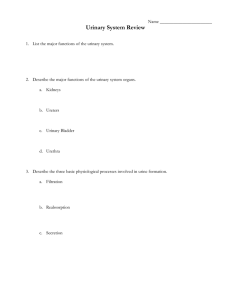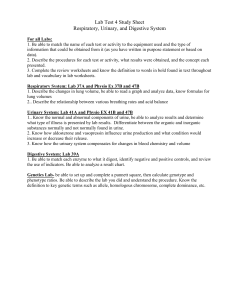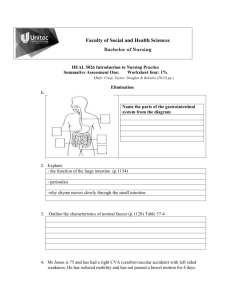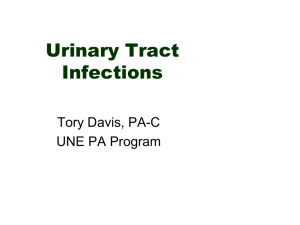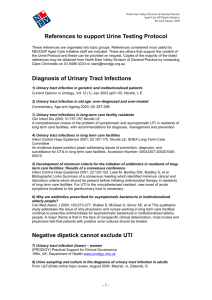Chapter 37: Urinary Tract Infections
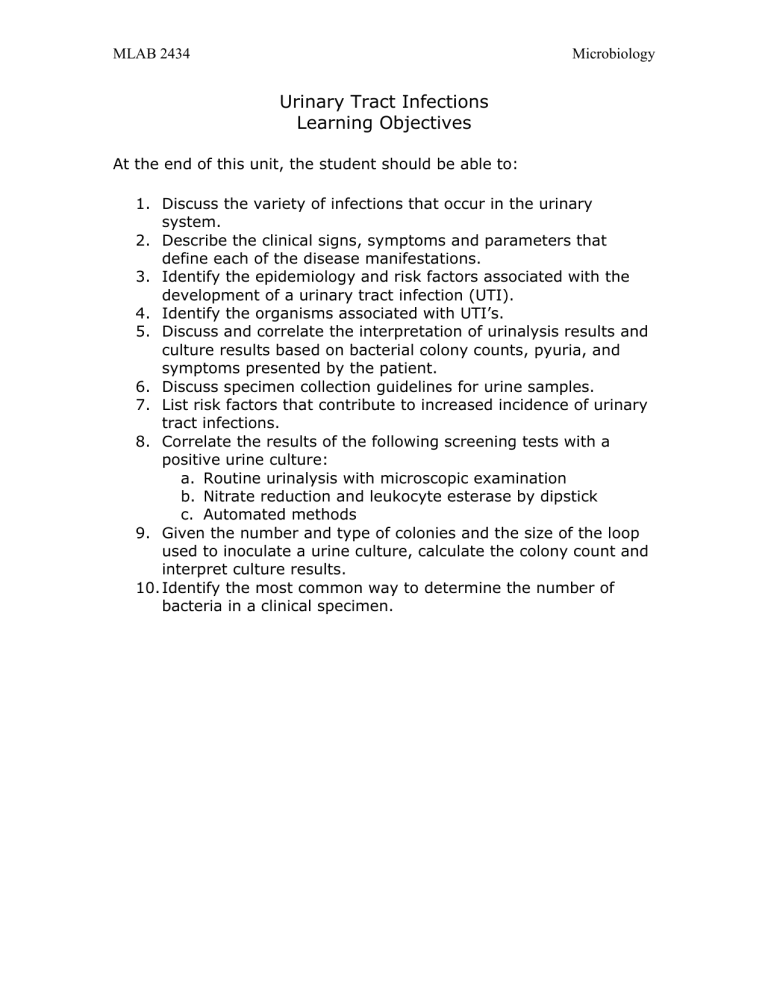
MLAB 2434 Microbiology
Urinary Tract Infections
Learning Objectives
At the end of this unit, the student should be able to:
1.
Discuss the variety of infections that occur in the urinary system.
2.
Describe the clinical signs, symptoms and parameters that define each of the disease manifestations.
3.
Identify the epidemiology and risk factors associated with the development of a urinary tract infection (UTI).
4.
Identify the organisms associated with UTI’s.
5.
Discuss and correlate the interpretation of urinalysis results and culture results based on bacterial colony counts, pyuria, and symptoms presented by the patient.
6.
Discuss specimen collection guidelines for urine samples.
7.
List risk factors that contribute to increased incidence of urinary tract infections.
8.
Correlate the results of the following screening tests with a positive urine culture: a.
Routine urinalysis with microscopic examination b.
Nitrate reduction and leukocyte esterase by dipstick c.
Automated methods
9.
Given the number and type of colonies and the size of the loop used to inoculate a urine culture, calculate the colony count and interpret culture results.
10.
Identify the most common way to determine the number of bacteria in a clinical specimen.


